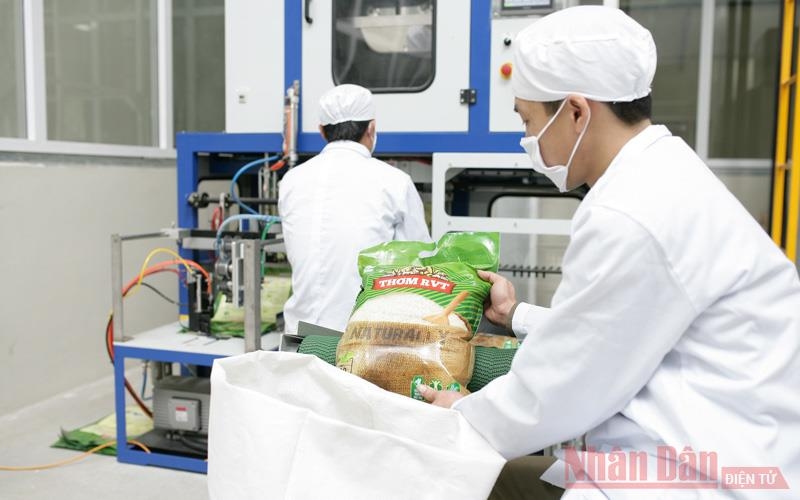Enhancing added value for rice industry
ABO/NDO - The Ministry of Agriculture and Rural Development has just approved a project on restructuring the Vietnam's rice industry until 2025 with a vision to 2030.
Accordingly, Vietnam will continue to restructure the rice industry in the direction of improving efficiency and sustainable development towards the objectives of fully meeting domestic consumption demand, being the core in ensuring national food security, and enhancing the efficiency of the rice value chain.
Under the project, Vietnam also expects to adapt to climate change and mitigate the impacts of climate change, make efficient use of natural resources and protect the ecological environment, and increase income for farmers and benefits for consumers, in addition to exporting high quality and high value rice.
The country also plans to keep its rice area at 3.6 to 3.7 million hectares by 2025, with rice production of 40 to 41 million tonnes per year.
 |
| Rice exports increase in value. |
The rice industry also aims at exporting 5 million tonnes of rice each year by 2025, including 40% fragrant rice, specialty rice and japonica rice, 20% sticky rice, 20% high quality rice, 15% medium and low-grade rice, and 5% products processed from rice. The percentage of branded rice exports is over 20%.
The country sets the target of exporting 4 million tonnes of rice by 2030, including 45% fragrant rice, specialty rice and japonica rice, 20% sticky rice, 15% high quality rice, 10% medium and low-grade rice, and 10% products processed from rice, with over 40% branded rice exports.
A notable aspect of the project is that the rice export volume has decreased gradually in each period, but the criteria for specialty rice, high quality rice, processed products from rice, and percentage of branded rice exports sees increases year by year.
This shows that the future direction of the rice industry is to reduce the area and output for export towards a focus on improving rice quality and selling prices.
This is the right target which is suitable to the current situation of rice production and export, particularly in the context that Vietnam has signed many free trade agreements (FTAs) with international partners, such as the EU-Vietnam Free Trade Agreement (EVFTA), the Regional Comprehensive Economic Partnership (RCEP), and the UK-Vietnam Free Trade Agreement (UKVFTA).
To make the best use of the advantages from FTAs, the rice industry has to constantly improve product quality to meet the increasingly strict requirements of importing countries.
Rice is a strategic commodity of our country, not only contributing to the economic development but also playing an important role in ensuring national food security. Therefore, promoting the restructuring of this industry is essential to better boost the achieved results while igniting untapped potential.
The solution for the coming time is to develop concentrated rice production areas with identified varieties and the links between production, consumption and export. It is also important to strictly control the production process, obey the limit of pesticide residue, and ensure traceability.
The rice industry also needs to apply advanced technology in terms of post-harvest preservation and processing to reduce losses, ensure uniform quality of rice products, and fully satisfy food hygiene and safety regulations.
(Source: NDO)
 về đầu trang
về đầu trang







